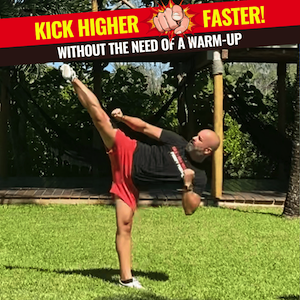You'll need to take a strategic and patient approach to safely resume martial arts training after an injury. First, get medical clearance from a healthcare provider who understands martial arts injuries. Then, gradually reintroduce training with solo drills and light rolling sessions, focusing on technique over intensity. Clearly communicate your limitations to training partners and set realistic recovery goals. Maintain fitness through active recovery with gentle exercises, and prioritize mental preparation and mindset. By following these steps, you'll be well on your way to a successful return to martial arts – and there's more to contemplate for a fully informed comeback.
Get Medical Clearance First
Before you start kicking and punching again, it's essential that you get medical clearance from a healthcare provider. This step is vital to guarantee that your injury has healed sufficiently and doesn't pose a risk of re-injury.
A thorough evaluation by a healthcare provider considers the specifics of your injury, including its severity and your overall health status, to develop an appropriate return-to-training plan.
Delaying your return to training until cleared by a medical professional can prevent complications and longer recovery times associated with premature activity.
It's also important to seek out specialists familiar with martial arts injuries, such as physiotherapists or sports medicine specialists. They can provide effective recovery plans that align with the specific movements and techniques involved in your training.
By obtaining medical clearance, you can guarantee a safe and successful return to martial arts training. Don't rush back into training without taking this critical step – your body will thank you.
A proper evaluation and recovery plan will help you get back to training safely and effectively.
Gradually Reintroduce Martial Arts Training
Now that you've got medical clearance, it's time to ease back into martial arts training. Your return to martial arts should start with solo drilling to reacquaint yourself with techniques while minimizing the risk of re-injury.
As you regain confidence in your movement patterns, engage in light rolling sessions with trusted partners at a controlled intensity. This will allow you to gauge your physical capability and comfort levels.
It's essential to maintain open communication with your instructors about your limitations and progress. They can help you create a structured plan that includes regular assessments of your readiness and adjustments based on feedback from your healthcare providers and instructors.
Gradually increase your training volume and intensity over weeks or months to allow your body to adapt without overwhelming it. Your healthcare provider may also recommend specific exercises to strengthen injured areas, so be sure to incorporate those into your routine.
With a gradual increase in training, you'll be back to full speed in no time. Remember, a safe return to martial arts training is key to avoiding re-injury and ensuring a successful comeback.
Focus on Technique Over Intensity

Rebuilding your martial arts skills after an injury requires a shift in focus from intensity to technique. During the initial weeks post-injury, prioritize technique to rebuild confidence and guarantee proper movement patterns as your body readjusts to training demands.
Engage in drills and situational exercises that allow for focused skill development without the added pressure of high-intensity sparring. This approach allows you to refine your techniques safely and gauge your physical capabilities.
As you return to training, it's crucial to maintain open communication with your instructors about your limitations. Inform them of any discomfort or concerns you may have, and work together to create a training plan that adheres to a technique-focused approach while promoting recovery.
Emphasizing correct techniques greatly reduces the risk of re-injury, allowing for a safer return to martial arts practice. By focusing on technique over intensity, you'll be able to recover efficiently and effectively, ultimately making your return to martial arts training a successful one.
Make technique your top priority, and you'll be back to your best in no time.
Communicate Limitations With Training Partners
You've refocused your training on technique over intensity, but another critical aspect of your safe return to martial arts involves your training partners.
To guarantee a safe and supportive training environment, it's vital to communicate your limitations to them clearly. Discuss specific techniques or movements that may be restricted due to injury, so they can adjust their approach during training sessions.
This open communication fosters collaborative safety, encouraging your training partners to provide feedback on potential risks or adjustments needed based on your limitations.
Establish a mutual understanding about the intensity and type of drills to be performed, prioritizing health over performance.
Regularly update your training partners on your recovery progress and any changes to your limitations. This way, you can facilitate safe and effective training interactions.
Set Realistic Recovery Goals and Expectations

A successful recovery hinges on setting realistic goals and expectations. As you return to martial arts training after an injury, you'll likely notice that your initial performances in cardio, strength, flexibility, and technique are below your previous benchmarks. That's okay. Regaining your pre-injury skill levels takes time, and it's crucial to set incremental and achievable goals to monitor your progress. Verify each milestone reflects realistic expectations based on your recovery stages.
Your muscle memory may have been altered post-injury, requiring patience and consistent practice to rebuild proficiency in techniques. Don't get discouraged; instead, focus on developing new skills and strengths during your recovery. View this phase as an opportunity for growth rather than a setback.
To stay motivated, visualize successful training sessions and maintain a positive mindset. Mental preparedness greatly influences your recovery and resumption of martial arts training. By setting realistic goals and expectations, you'll be better equipped to handle the physical and mental challenges of returning to training.
With a clear plan and positive mindset, you'll be on your way to a successful recovery and a strong return to martial arts.
Maintain Fitness Through Active Recovery
Now that you have a clear plan and positive mindset in place, it's time to focus on maintaining your fitness level without jeopardizing your recovery. You can achieve this through active recovery, which involves gentle exercises that promote healing and fitness maintenance.
Consult with your healthcare provider to identify safe activities, such as light cardio like walking or cycling, that won't put undue stress on your injury.
Incorporate mobility work like stretching and yoga to enhance your flexibility and joint range of motion. This will be essential for a safe return to martial arts.
You can also engage in basic strength training exercises that focus on non-injured areas, which will help preserve muscle mass and strength.
Monitor your activities closely to prevent overexertion, allowing your body to heal while keeping your fitness levels stable.
By collaborating with your healthcare provider and prioritizing active recovery, you'll be able to maintain your fitness level and guarantee a smoother change back to martial arts training.
Remember to stay within your limits and prioritize your recovery goals.
Prioritize Mental Preparation and Mindset

Beyond the physical aspects of recovery, prioritizing mental preparation and mindset is essential for a successful return to martial arts. You'll need patience as you work to regain your pre-injury skill levels, understanding that it may take time and may not be immediately attainable.
Be extra careful not to compare your current self to past performance; instead, set realistic goals for recovery and progression. Focus on gradual improvement, and celebrate small victories along the way.
As you prepare to return to training, visualizing successful sessions can help boost your confidence and overcome fears of re-injury. This mental preparation will foster a positive mindset toward returning to martial arts.
You may also find it helpful to incorporate meditation or mindfulness practices to enhance your focus and reduce anxiety. Don't be afraid to seek support from training partners and coaches, and keep your healthcare provider informed about your progress.



